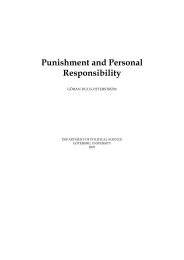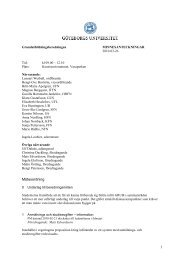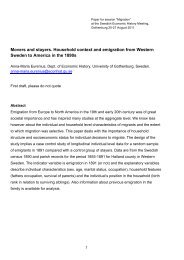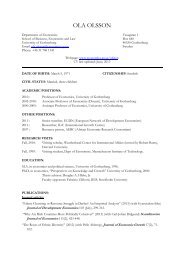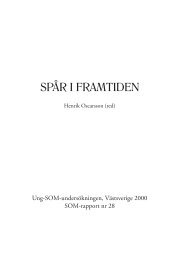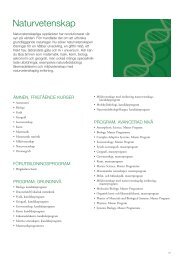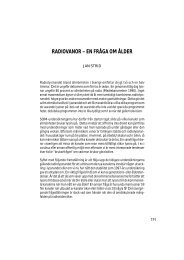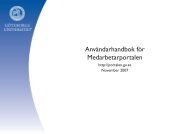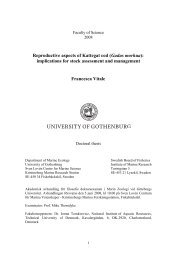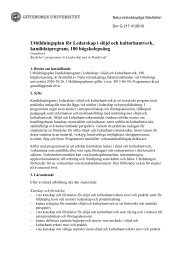development of small-scale intermodal freight transportation in a ...
development of small-scale intermodal freight transportation in a ...
development of small-scale intermodal freight transportation in a ...
You also want an ePaper? Increase the reach of your titles
YUMPU automatically turns print PDFs into web optimized ePapers that Google loves.
transport s<strong>in</strong>ce forwarders and hauliers have better possibilities <strong>of</strong> us<strong>in</strong>g <strong><strong>in</strong>termodal</strong> services<br />
than the <strong>in</strong>dustries’ <strong>in</strong>-house transport departments. The ma<strong>in</strong> reasons are that pr<strong>of</strong>essional<br />
transport companies most <strong>of</strong>ten operate on a larger <strong>scale</strong> and that they are more<br />
likely to possess the needed expertise.<br />
Furthermore, if <strong><strong>in</strong>termodal</strong> transport can <strong>in</strong>crease its quality or decrease the price level,<br />
large new markets may open up. Increased environmental awareness <strong>of</strong> consumers can <strong>in</strong>duce<br />
a substantial lift if the price level is <strong>in</strong> the same range as for all-road transport. In l<strong>in</strong>e<br />
with saturation on the roads and <strong>in</strong> the air, <strong><strong>in</strong>termodal</strong> road-rail transport can also take on a<br />
role as the prime alternative for fast transport. Growth <strong>in</strong> this market niche, however, requires<br />
a significant <strong>in</strong>crease <strong>in</strong> service level and organisation, but it also facilitates potentially<br />
high revenues.<br />
Road <strong>transportation</strong> is currently very competitive with<strong>in</strong> the EU. Prices are down, service<br />
levels are up and deregulation is ahead <strong>of</strong> rail <strong>transportation</strong> (STONE, 1997, p. 5). However,<br />
hauliers face problems due to congestion, which <strong>in</strong>duces costs and problems to keep<br />
agreed service levels, new legislation for the <strong>in</strong>ternalisation <strong>of</strong> external costs and a price<br />
level that is not likely to be persistent. Turn<strong>in</strong>g to <strong><strong>in</strong>termodal</strong> transport is a viable way <strong>of</strong><br />
address<strong>in</strong>g these problems.<br />
Also the railways face problems. EU directive 91/440 on competition and revitalisation <strong>of</strong><br />
railways (The Official Journal, 1991) forces them to be pr<strong>of</strong>itable also <strong>in</strong> bus<strong>in</strong>ess economic<br />
terms. The presently bad pr<strong>of</strong>itability keeps new actors away from enter<strong>in</strong>g the <strong>in</strong>dustry<br />
on a large <strong>scale</strong>, but “pearls” have been picked, which has caused the national railways<br />
to concentrate on the pr<strong>of</strong>itable l<strong>in</strong>es, hence giv<strong>in</strong>g up old objectives concern<strong>in</strong>g spatial<br />
coverage. Wagonload traffic is seriously problematic. On the one hand cancellation <strong>of</strong><br />
wagonload services means that <strong><strong>in</strong>termodal</strong> transport can w<strong>in</strong> transport volumes, but on the<br />
other hand it means that s<strong>in</strong>gle <strong><strong>in</strong>termodal</strong> wagons cannot be moved by wagonload services<br />
on low-flow transport relations. Moreover, <strong>in</strong>creas<strong>in</strong>g <strong><strong>in</strong>termodal</strong> flows at wagonload’s expense<br />
33 does not fulfil the political goals for <strong><strong>in</strong>termodal</strong> transport and the predatory behaviour<br />
causes frictions with<strong>in</strong> the railways.<br />
Moreover, pressure for better productivity will force the operators to utilise the equipment<br />
for more hours each day. In order to realise this, the current operations based upon nightleaps<br />
have to be modified. Fortunately, two trends po<strong>in</strong>t <strong>in</strong> the direction <strong>of</strong> better track access<br />
dur<strong>in</strong>g daytime for <strong><strong>in</strong>termodal</strong> tra<strong>in</strong>s. Firstly, as <strong><strong>in</strong>termodal</strong> transport competes with<br />
rapid road haulage, <strong><strong>in</strong>termodal</strong> tra<strong>in</strong>s have enjoyed higher priority on the railway l<strong>in</strong>es dur<strong>in</strong>g<br />
the past few years. Secondly, the extension <strong>of</strong> the European tra<strong>in</strong> network with dedi-<br />
33 BUKOLD (1997, p. 2) asserts that subsidies for <strong><strong>in</strong>termodal</strong> services have caused this “cannibalism-effect”,<br />
but it does not appear <strong>in</strong> the statistics due to lack <strong>of</strong> data.<br />
17




